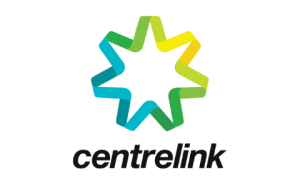Key events in May 2023
- Global shares slipped in May with a mixed performance across countries and sectors. Signs of softer economic activity, persistent inflation pressures and concerns over central bank intentions on interest rates weighed on share prices.
- Wall Street’s benchmark S&P 500 Index made a marginal gain in May. Optimism about the promise of artificial intelligence (AI) boosting productivity and profit margins for technology companies was the key positive. The technology dominated NASDAQ index made very strong gains in May. This outweighed concerns over the US government’s ‘Debt Ceiling’ negotiations as well as US regional banking stress and tighter credit prospects. Encouraging signs that US consumer annual inflation has edged lower from 5% in March to 4.9% in April also partly alleviated investor concerns. US economic activity indicators were mixed with strong job gains countered by subdued retail spending and housing construction.
- European share markets fell sharply in May given economic concerns as well as continuing worries over the Russia-Ukraine conflict. Consumer inflation in the Euro-area rose from 6.9% in March to 7% in April given persistent rises in food prices. The European Central Bank (ECB) responded with another 0.25% interest rate rise to 3.75%. Notably Germany slipped into recession in the March quarter.
- Asian share markets delivered a mixed performance. The MSCI China Index slumped with worries over China’s growth prospects. However Japanese shares provided a positive surprise given strong corporate profit prospects with a weak currency and supportive low interest rate settings.
- Australian shares fell in May as lower commodity prices, higher interest rates and weak consumer spending cautioned investors. The sharpest falls were in the Consumer Discretionary (-6.1%) and Consumer Staples (-4.6%) sectors given signs of a ‘retail recession” for consumer spending. The combination of higher mortgage interest rates, rising rents and stubborn inflation pressures is squeezing purchasing power. There was one remarkably positive gain of 11.6% for the Information Technology sector in May which benefitted from the global surge for anything remotely related to AI.
Asset class summary
Asset class returns in Australian dollars – periods to 31 May 2023
CYTD | 1 month | 3 months | 1 year | 3 years pa | 5 years pa | 10 years pa | |
Australian shares | 2.7% | -2.5% | -0.9% | 2.9% | 11.4% | 7.5% | 8.1% |
Global shares (hedged) | 7.6% | -0.4% | 3.4% | 0.5% | 9.4% | 6.3% | 8.9% |
Global shares (unhedged) | 12.8% | 1.0% | 7.8% | 11.8% | 11.0% | 10.2% | 12.1% |
Emerging markets (unhedged) | 5.9% | 0.4% | 4.4% | 1.4% | 4.4% | 2.5% | 6.0% |
Australian property securities | 3.6% | -1.8% | -3.8% | -3.6% | 8.1% | 4.4% | 7.9% |
Global property securities (hedged) | -1.8% | -3.8% | -5.7% | -15.7% | 2.9% | -0.7% | 3.5% |
Global listed infrastructure (hedged) | -3.1% | -4.7% | -0.5% | -9.5% | 4.0% | 4.6% | 7.2% |
Australian bonds | 3.5% | -1.2% | 2.1% | 1.7% | -2.8% | 1.0% | 2.5% |
Global bonds (hedged) | 2.2% | -0.5% | 2.0% | -2.6% | -3.4% | 0.2% | 2.4% |
Global high yield bonds (hedged) | 2.6% | -1.0% | 1.1% | -1.7% | 1.3% | 2.3% | 0.0% |
Australian Inflation-linked bonds | 5.1% | -0.5% | 2.9% | 6.1% | 2.4% | 2.8% | 2.8% |
Cash | 1.4% | 0.3% | 0.9% | 2.6% | 0.9% | 1.1% | 1.7% |
AUD/USD | -4.6% | -2.1% | -4.0% | -9.8% | -0.8% | -3.1% | -3.9% |
Past performance is not a reliable indicator of future performance.
Sources: Australian shares – S&P/ASX 200 Total Return Index; Global shares (hedged) – MSCI All Countries World (A$ hedged, Net); Global shares (unhedged) – MSCI All Countries World in A$ (Net); Emerging markets – MSCI Emerging Markets in A$ (Net); Australian property securities – S&P/ASX 300 A-REIT Accumulation Index; Global property securities – FTSE EPRA/NAREIT Developed (A$ hedged, Net); Global listed infrastructure – FTSE Global Core Infrastructure 50/50 (Hedged $A); Australian bonds – Bloomberg AusBond Composite 0+ Yr Index; Global bonds (A$ hedged) – Barclays Global Aggregate (A$ hedged, Gross); Global high yield bonds (A$ hedged) – Composite of BCGA US Corp HY BB/B (A$ hedged) & S&P LSTA BB/B Leveraged Loan Index; Australian inflation-linked bonds – Bloomberg AusBond Inflation Government 0+ Yr Index; Cash – Bloomberg AusBond Bank Bill Index; AUD/USD – WM/Reuters Daily (4 pm GMT).
Key events in global markets over the last three months to May
Global share prices have climbed a wall of worry this year. High inflation, rising interest rates, banking stress and the Ukraine conflict has not curbed investor’s enthusiasm. Global shares (unhedged) have delivered a very strong 7.8% return for the three months to May. The weaker Australian dollar has also materially added to this gain. By comparison, hedged global shares have provided a milder 3.4% return.
Wall Street’s benchmark S&P 500 Index has delivered a remarkable 5.6% return in local currency terms. These gains come despite the US central bank continuing to raise interest rates. Investors appear to have gained solace from milder consumer inflation with April’s 4.9% annual result being the lowest in the past two years. The rapid collapse of three US regional banks in March did place Wall Street into a brief tailspin. This weakness was reversed by the rapid supportive responses from the US central bank and the US Federal Government to assure bank depositors. US economic activity remains mixed with robust jobs growth being in sharp contrast to slower retail spending and weaker housing construction.
European shares have drifted lower but have been resilient considering that the Russia-Ukraine conflict is on their doorstep. The EURO STOXX 50 posted a mildly negative -0.5% return in local currency terms.
The performance of Asian share markets has been mixed. The MSCI China Index returned -9.1%, in local currency terms. In contrast, the Japanese share market (Nikkei 225 Index) delivered a very strong return of 13.6%, with the Japanese central bank maintaining their low interest rate and bond yield targets.
Global bonds (hedged) delivered a solid 2.0% quarterly return after tough times in the past year.
Global high yield bonds (hedged) also made a positive gain with a 1.1% return. Investors have regained their appetite for high yield with optimism that the inflation and interest rate risks were less threatening than feared.
Key events in Australia over the last three months to May
Australian shares delivered a weak -0.9% return with a mixed performance across industry sectors. Information Technology (16.6%) led the market gains, which followed its global peers higher. There were also very strong gains for Communications Services (5.9%) and Utilities (4.0%). However, there was sharp weakness in the Financials (-4.9%) as global banking stress exacted a toll. Resources shares (-1.4%) also disappointed as iron ore and coal prices corrected on Chinese growth concerns.
Australia’s economy is subdued judging by sedate retail spending and weak housing construction activity. Consumers are understandably reluctant to spend given the climate of high inflation and interest rates. The Reserve Bank of Australia’s surprise 0.25% interest rate hike in May to a 3.85% cash interest rate only added to the worry list. Inflation pressures remain sticky and stubborn judging by April’s consumer annual inflation coming in at 6.8% given strong rises in electricity costs and residential rents. Housing provides a complex profile with a rebound in house and apartment prices over recent months, but a dramatic slide in new housing approvals and a rise in insolvencies amongst builders. There are also signs that the labour market strength is fading with a loss of jobs in April and the unemployment rate edging up from 3.5% to 3.7%.
Global prospects
Global share prices have positively surprised this year by making solid gains despite the sharp weakness in banking shares. However, investors appear to be precariously treading between optimism that inflation is moderating and pessimism that a recession may be looming. The rapid interest rate increases and tighter credit conditions after a sequence of financial shocks – sudden US bank collapses such as Silicon Valley Bank in March and First Republic in May, as well as the Credit Suisse takeover – have materially increased the downside risks to the global economy and share prices.
For investors, assessing these considerable risks is very challenging. Given that there are multiple positive and negative outcomes possible over coming months, investors should maintain a disciplined and diversified strategy.
Important information
This communication is provided by MLC Investments Limited (ABN 30 002 641 661, AFSL 230705) (MLC), part of the Insignia Financial Group of companies (comprising Insignia Financial Ltd, ABN 49 100 103 722 and its related bodies corporate) (‘Insignia Financial Group’). An investment with MLC does not represent a deposit or liability of, and is not guaranteed by, the Insignia Financial Group.
This information may constitute general advice. It has been prepared without taking account of an investor’s objectives, financial situation or needs and because of that an investor should, before acting on the advice, consider the appropriateness of the advice having regard to their personal objectives, financial situation and needs.
Past performance is not a reliable indicator of future performance. Share market returns are all in local currency.
Any opinions expressed in this communication constitute our judgement at the time of issue and are subject to change. We believe that the information contained in this communication is correct and that any estimates, opinions, conclusions or recommendations are reasonably held or made as at the time of compilation. However, no warranty is made as to their accuracy or reliability (which may change without notice), or other information contained in this communication.
This information is directed to and prepared for Australian residents only.
MLC may use the services of any member of the Insignia Financial Group where it makes good business sense to do so and will benefit customers. Amounts paid for these services are always negotiated on an arm’s length basis. MLC relies on third parties to provide certain information and is not responsible for its accuracy, nor is MLC liable for any loss arising from a person relying on information provided by third parties.
Bloomberg Finance L.P. and its affiliates (collectively, “Bloomberg”) do not approve or endorse any information included in this material and disclaim all liability for any loss or damage of any kind arising out of the use of all or any part of this material.
The funds referred to herein is not sponsored, endorsed, or promoted by MSCI, and MSCI bears no liability with respect to any such funds.






